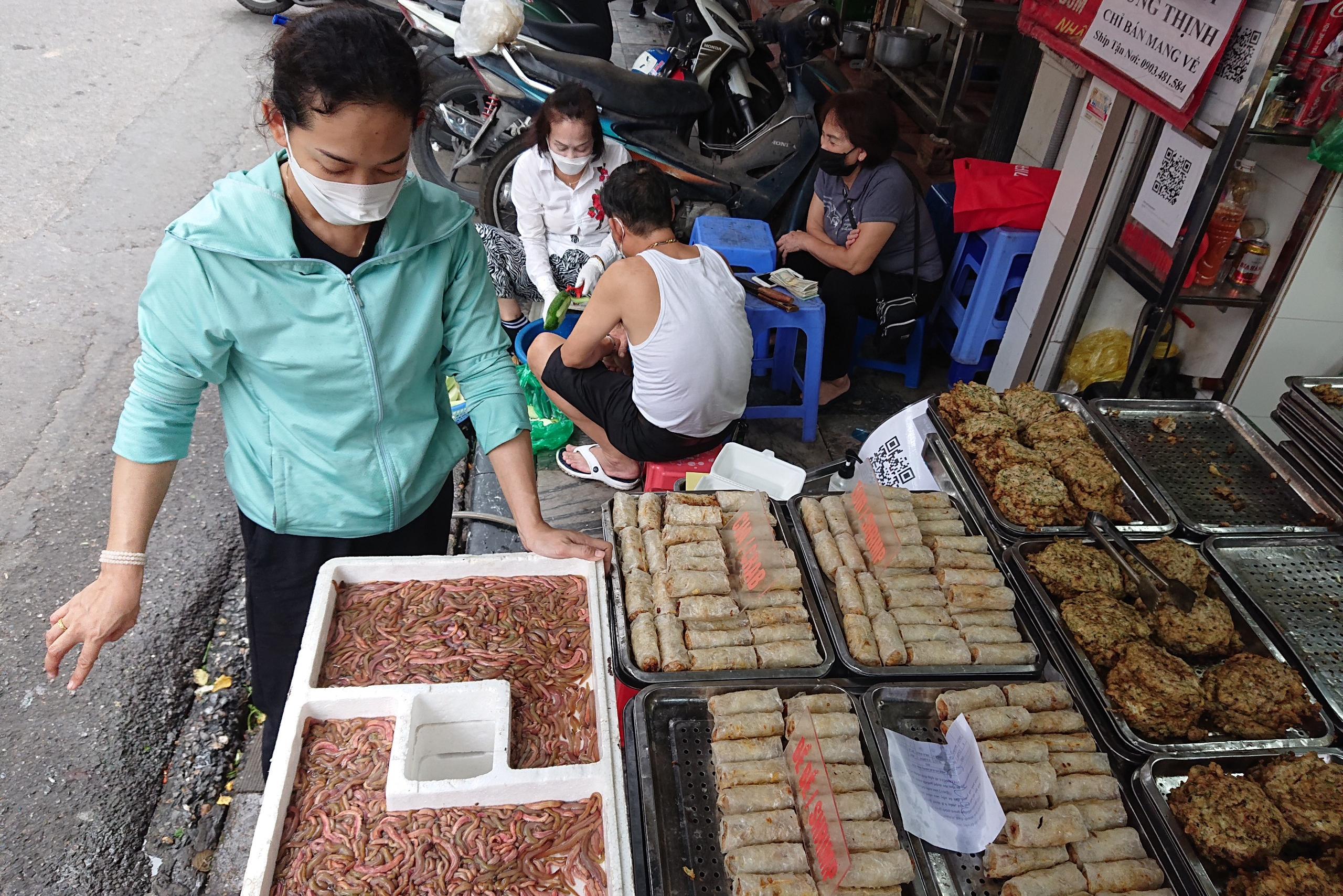Cha ruoi (sand worm omelet) is a Vietnamese dish made from ruoi (sand worms or Nereididae) which has been popular in Hanoi for quite a while.
While the worms themselves may look frightening to some, when mixed into an omelet, they add a delicious flavor that perfectly represents the city of Hanoi.
With 30 years of experience serving this local delicacy, Hung Thinh at 1 Hang Chieu in Hoan Kiem District’s Hang Buom Ward is one of the oldest cha ruoi restaurants in Hanoi.
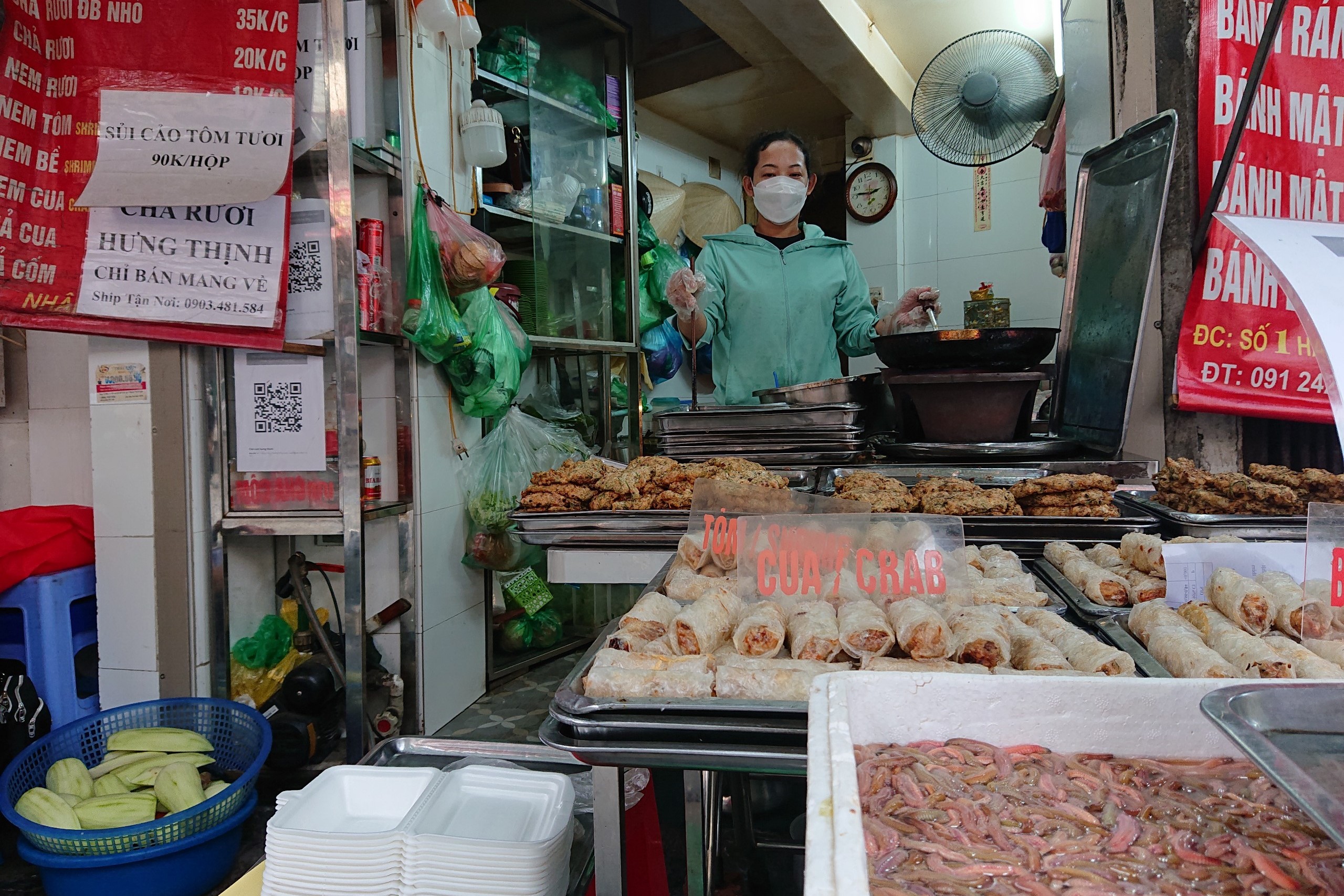 |
| Sand worms and sand worm omelets at Hung Thinh Restaurant in Hanoi’s Hoan Kiem District. Photo: Duong Lieu / Tuoi Tre News |
According to Bui Thi Nga, the owner of Hung Thinh, the most important ingredient in a sand worm omelet is, of course, high quality fresh sand worms.
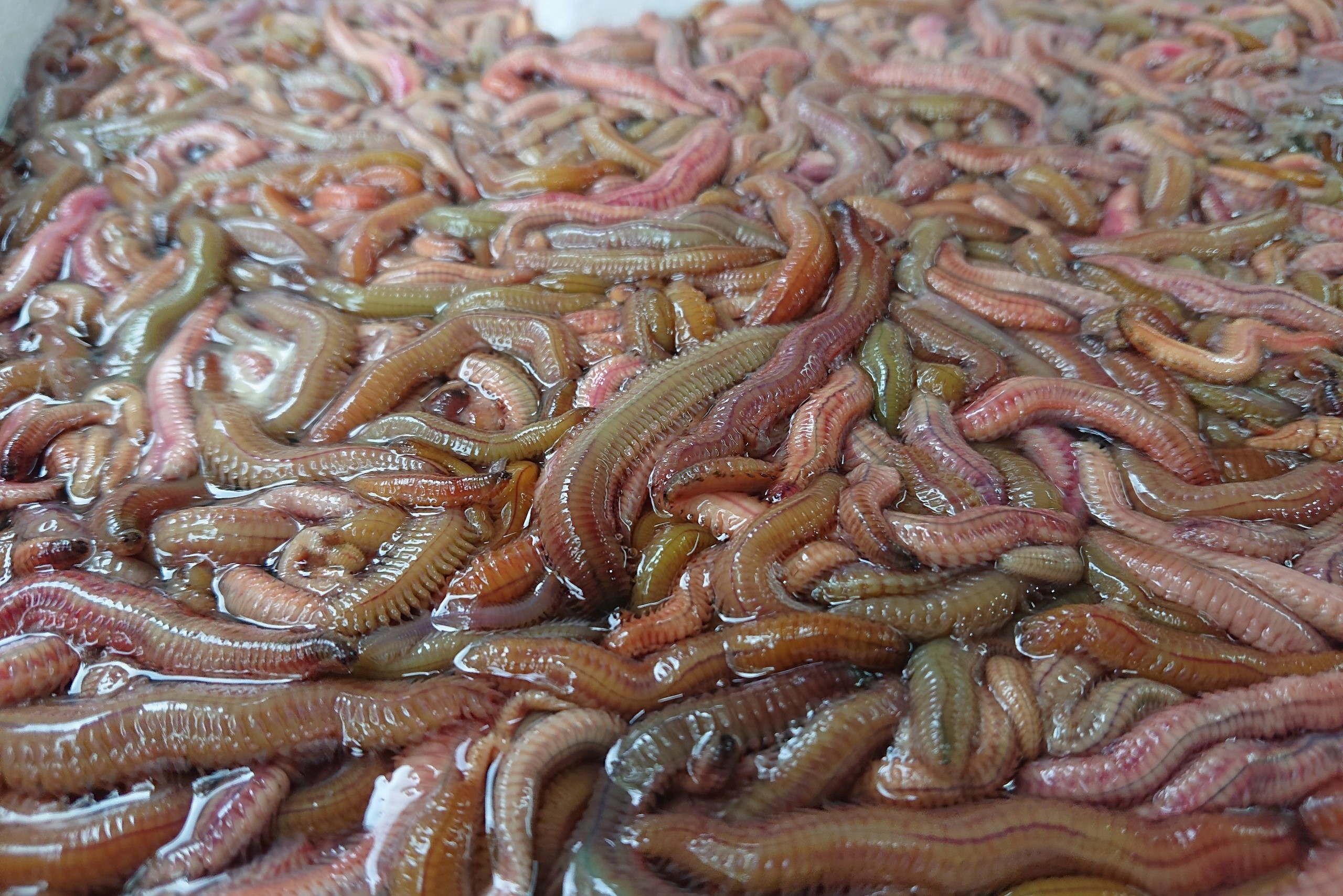 |
| Ruoi (sand worms or Nereididae) are ready to be turned into omelets at Hung Thinh Restaurant in Hanoi’s Hoan Kiem District. Photo: Duong Lieu / Tuoi Tre News |
“[To make the omelet] we mix sand worms with pork, eggs, spring onion, and dill. We then season the mixture to taste,” Nga explained.
“Another essential ingredient for a good sand worm omelet dish is mandarin orange peel because it adds more fragrance to the dish,” she added.
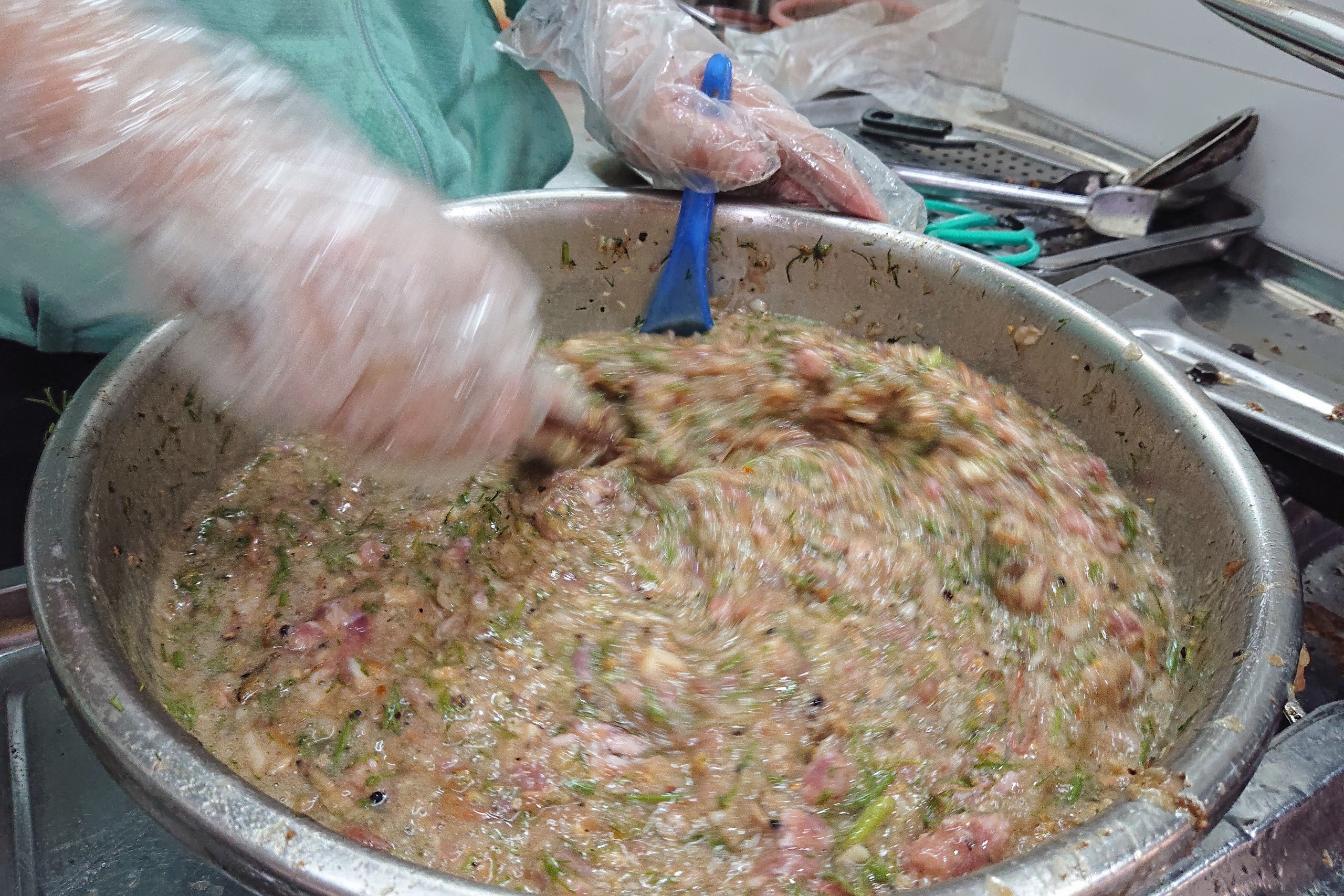 |
| A mixture of ruoi, pork, eggs, spring onion, dill and spices are ready to be turned into omelets at Hung Thinh Restaurant in Hanoi’s Hoan Kiem District. Photo: Duong Lieu / Tuoi Tre News |
After all the ingredients are blended together, the mixture is pressed into disk-shaped portions and fried over medium heat.
Most people agree that cha ruoi is best served hot with noodles, vegetables, and sweet and sour fish sauce.
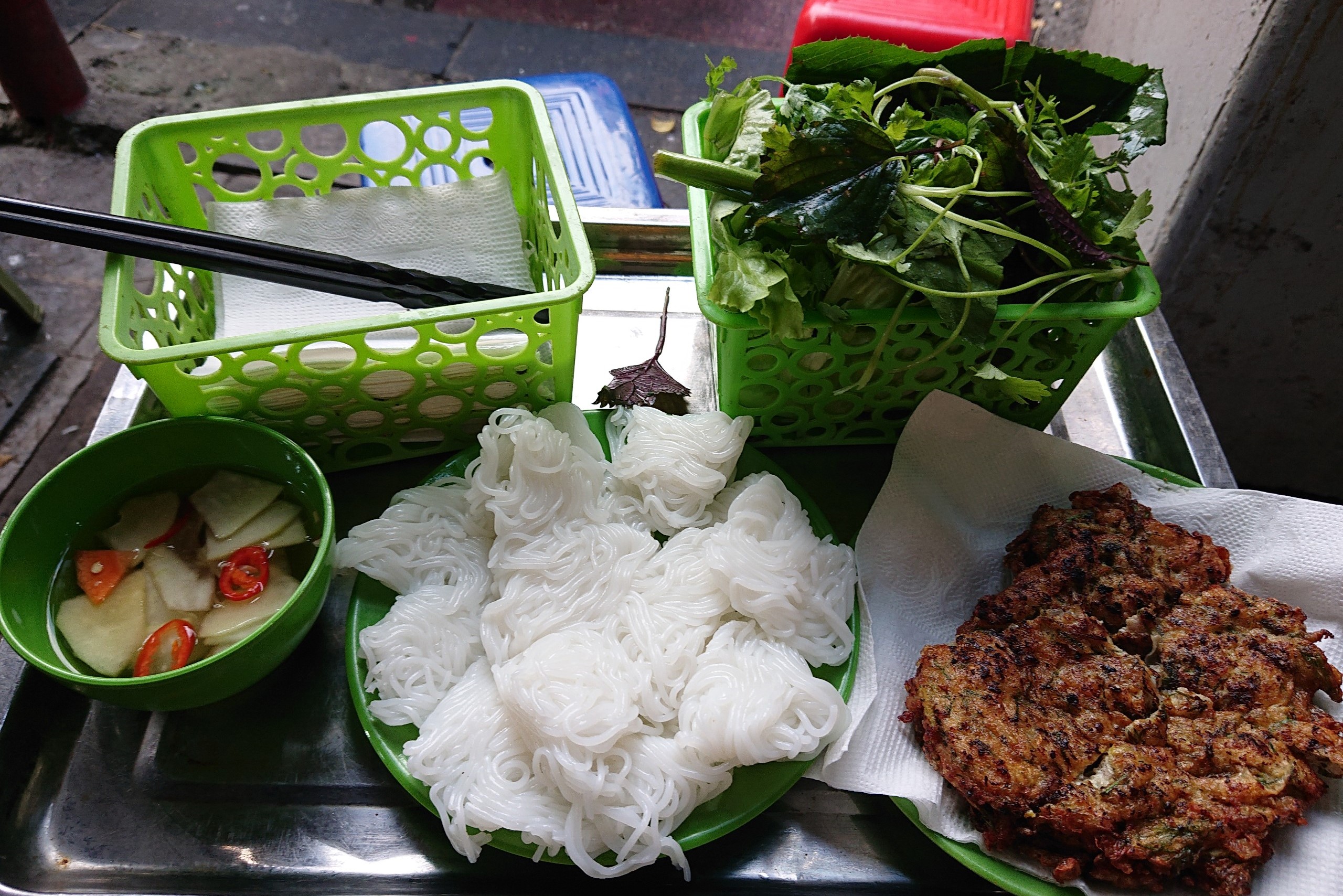 |
| A sand worm omelete, vegetables, noodles, and sweet and sour fish sauce at Hung Thinh Restaurant in Hanoi’s Hoan Kiem District. Photo: Duong Lieu / Tuoi Tre News |
Nga said her restaurant often received many foreign visitors before COVID-19.
“They are always surprised to see sand worms and have no idea how they can be made into a meal. They always compliment us after trying the omelet and usually visit us again for more,” Nga said.
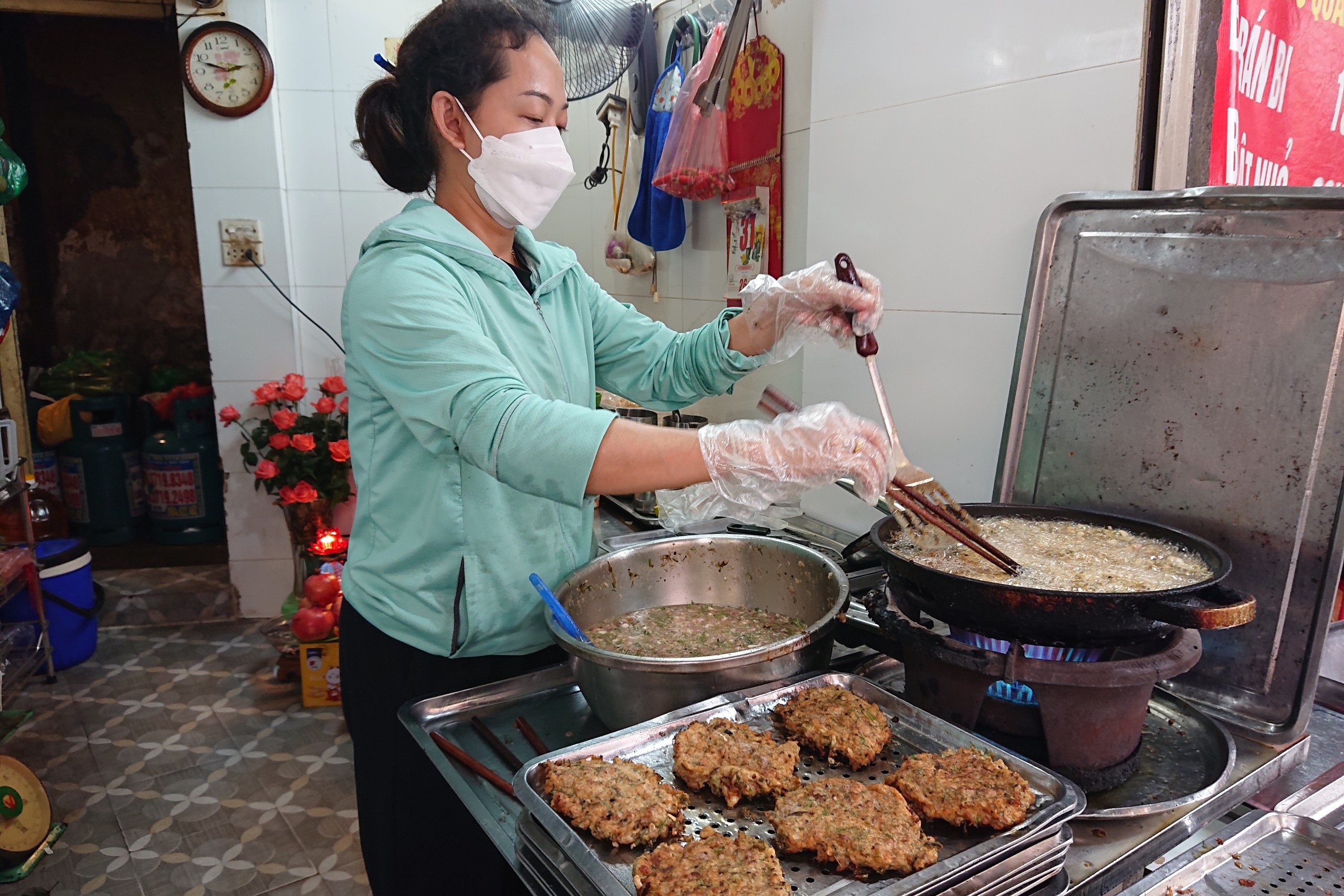 |
| Bui Thi Nga, owner of Hung Thinh Restaurant fries cha ruoi (sand worm omelet) at her restaurant in Hanoi’s Hoan Kiem District. Photo: Duong Lieu / Tuoi Tre News |
Other popular cha ruoi restaurants in Hanoi include 16B Duong Thanh and 5B O Quan Chuong in Hoan Kiem District.
In Vietnam, sand worms are not only adored for their taste in the locally famous omelet, but also for their high nutritional value, which includes significant amounts of calcium and protein.
100 grams of sand worms includes just 92 calories.
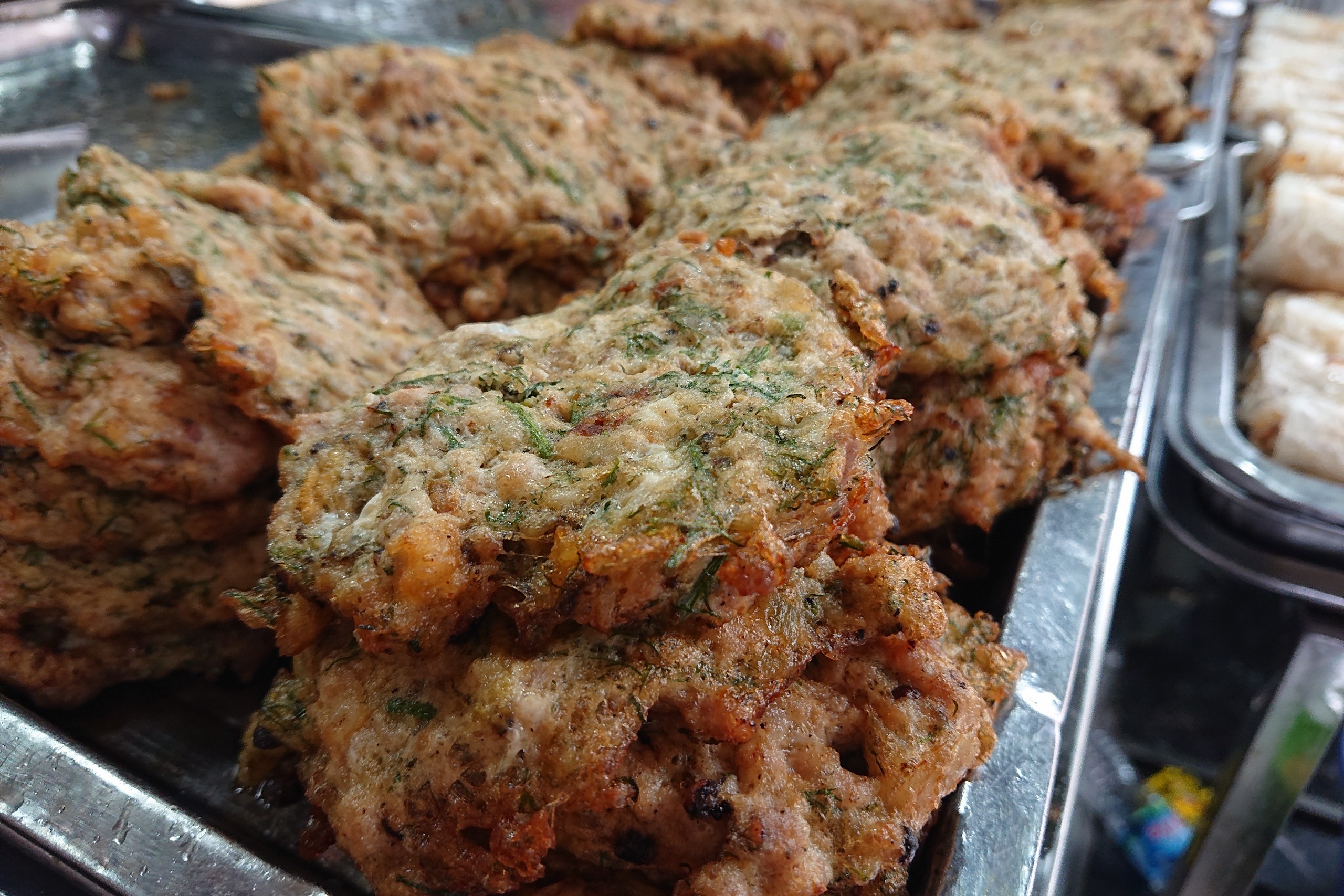 |
| Cha ruoi (sand worm omelettes) are ready to serve at Hung Thinh Restaurant in Hanoi’s Hoan Kiem District. Photo: Duong Lieu / Tuoi Tre News |
Nicknamed ‘sand dragons,’ sand worms can be found in a variety of colors – from pink to light brown, light green, and white.
Sand worms are typically harvested between late autumn and early winter in northern Vietnam, but the most popular days for harvesting the worms are the 20th of September and 5th of October in the lunar calendar.
They are normally found in brackish waters in the northern coastal provinces of Hai Duong and Quang Ninh, as well as in Hai Phong City.
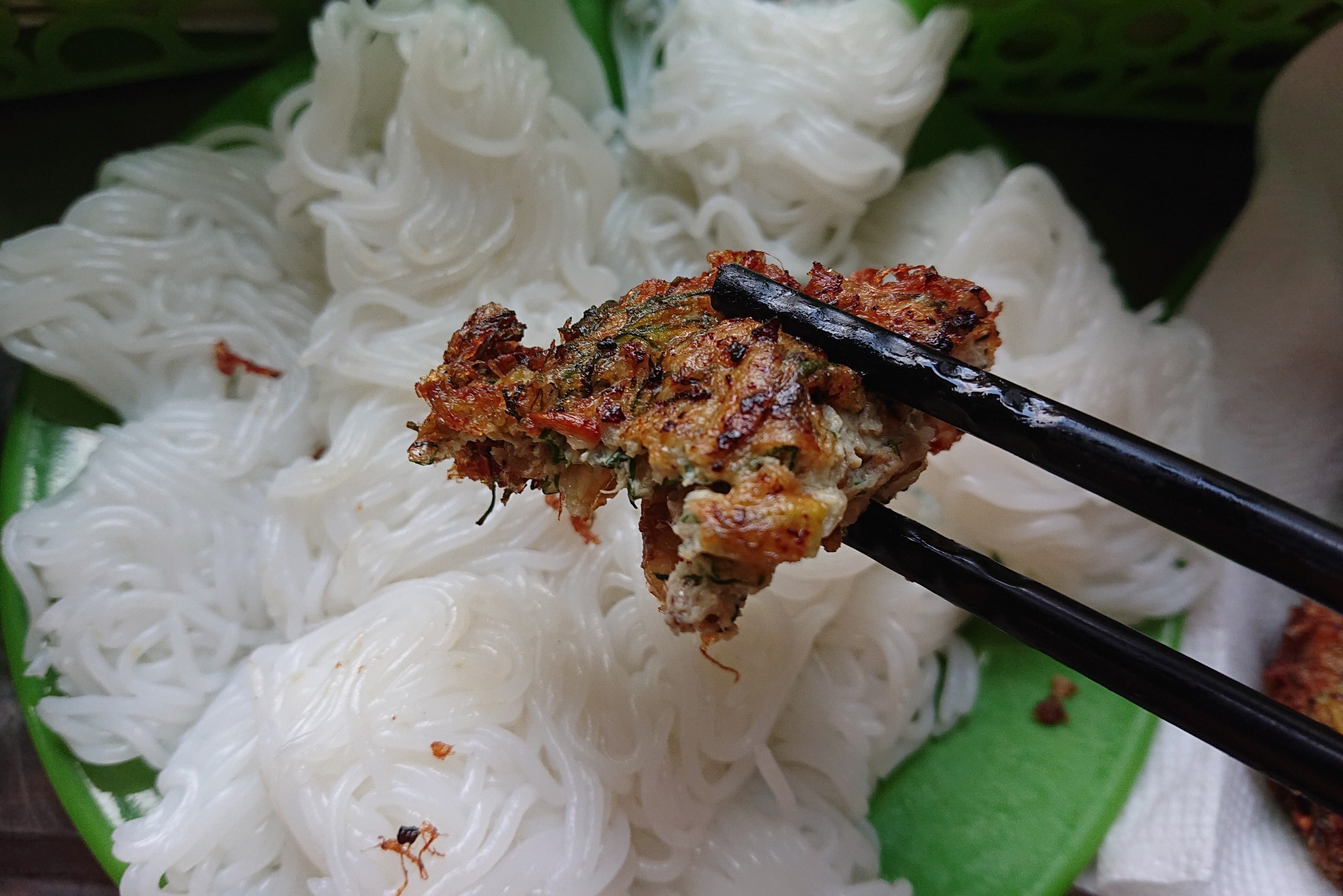 |
| A piece of golden-brown cha ruoi at Hung Thinh Restaurant in Hanoi’s Hoan Kiem District. Photo: Duong Lieu / Tuoi Tre News |
Like us on Facebook or follow us on Twitter to get the latest news about Vietnam!



